SIMStation Go in Real-World Testing: A Hands-On Comparison with SIMStation Pro
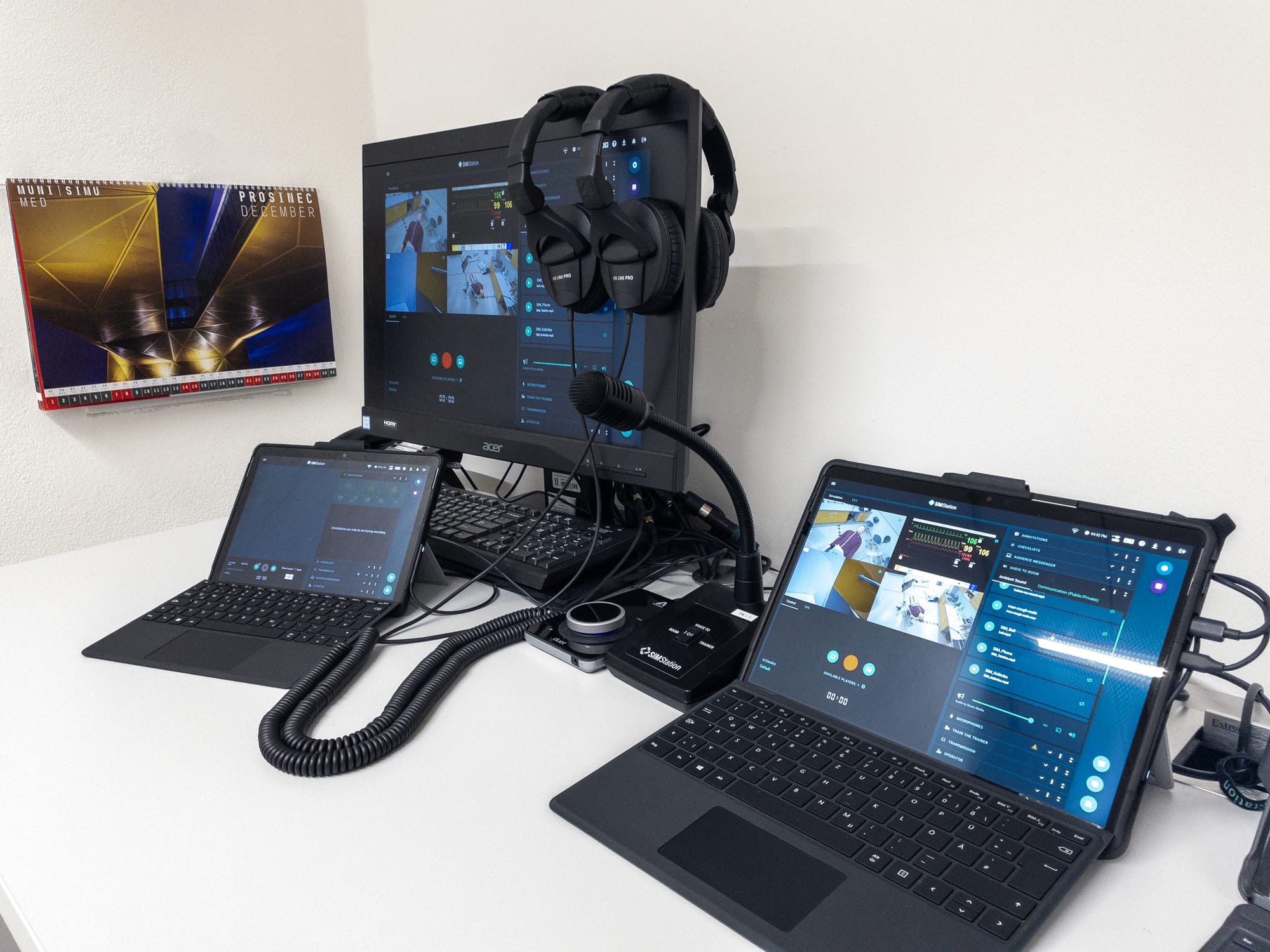
Attending the M3d+it Conference provided a great reason to visit Vienna. While there, I took the opportunity to arrange a short-term loan of the SIMStation Go from the SIMStation Vienna office – a device I had been eager to try for many months.
I first heard about the SIMStation Go in June 2023 during a company presentation at the SIMStation User Meeting, organised by the Czech distributor, AV Media, at our simulation centre. It was a brief introduction, but enough to pique my interest – the new ultra-mobile product line had just been unveiled.
The SIMStation Go is a highly portable simulation recording and debriefing system designed for in-situ training. It consolidates core AV and control components into a single, transportable unit. Compared to the SIMStation Pro, it offers reduced setup time, effortless mobility, and intuitive integration – albeit with compromises in audio processing and expansion options.
It took until December 2024 before I finally had the chance to test it properly. I chose to use it during a course in CPR and emergency response in dental practice – a session held at SIMU. This particular course is unique in that it doesn't take place in one of our fully-equipped high-fidelity simulation rooms. Instead, we run it in a dental gnatology classroom, which we must fully equip for the session. The control room consists of a teacher’s desk in the adjacent dental room, and the debriefing takes place in our standard debriefing room one floor below – which also requires reconfiguration prior to use.
Under normal circumstances, we record and debrief using the SIMStation Pro gen. 2. This made the session a perfect opportunity to do a side-by-side comparison of the Pro and Go units.
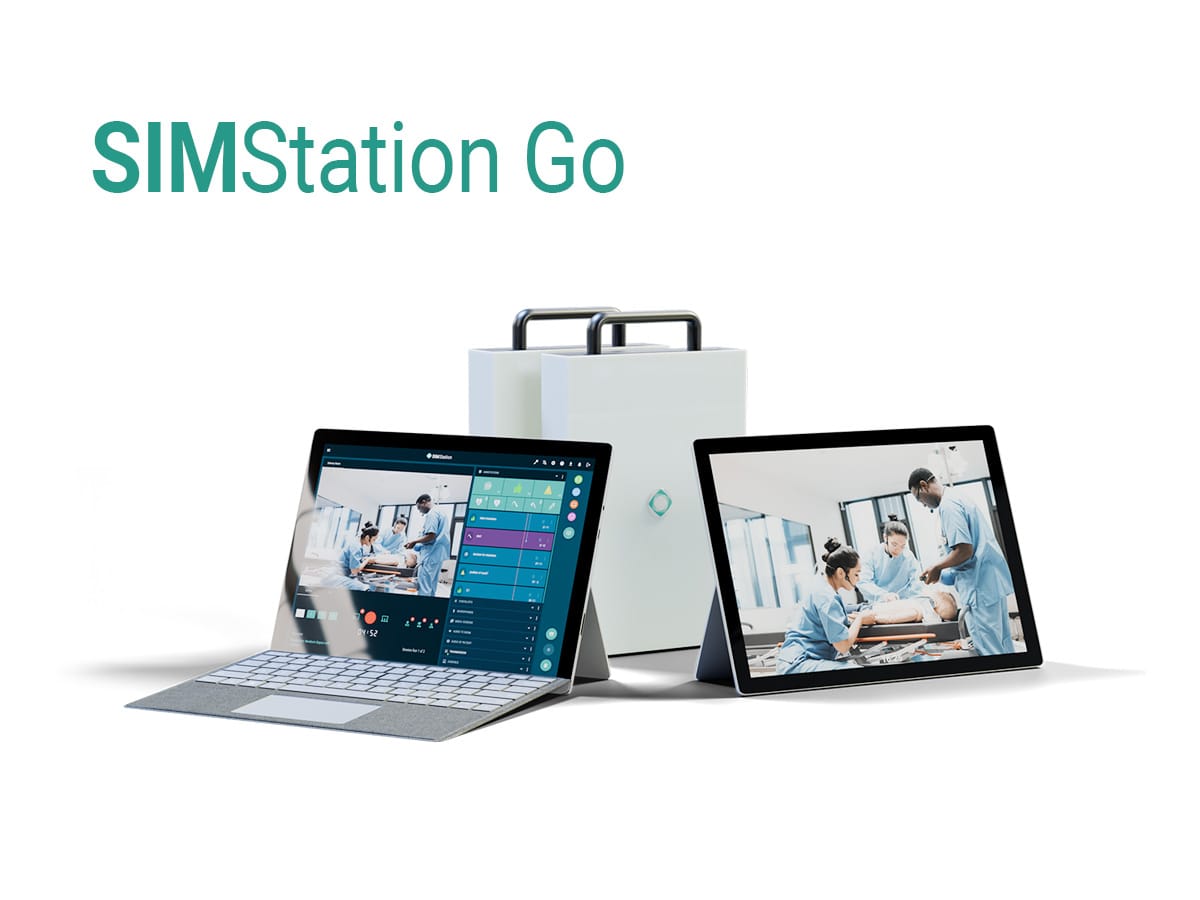
Competitor: SIMStation Pro
To the best of my memory, the SIMStation Pro was the first fully-fledged product developed by SIMStation over a decade ago. It was exactly the system the market needed at the time – professional, reliable, compact enough to slide under a desk in a simulation room, yet portable enough to use in in-situ scenarios.
The SIMStation Pro is a robust and versatile simulation AV solution ideal for semi-permanent setups. It offers superior audio processing, greater scalability, and customisable configurations. Unlike the Go, it includes dedicated audio hardware and a modular system architecture, making it suitable for both fixed and mobile use – albeit with increased transport demands.
The Pro later served as the foundation for the development of the Enterprise system – a more complex, modular setup intended for permanent installation in simulation centres. Despite the increased scale, Enterprise retains much of the same user experience and hardware philosophy as the Pro.
It’s this compatibility that influenced our decision to acquire the Pro. At the time, we already had eleven Enterprise control stations and one Essential unit dating back to 2019. We were fortunate to receive the very first SIMStation Pro gen. 2 ever built. Back then, SIMStation hadn’t yet developed the elegant custom cases in which the systems are now shipped – but that didn’t matter. What thrilled me was how closely the Pro gen. 2 mirrored our Enterprise systems in both hardware and functionality.
Later, when we upgraded our entire infrastructure to SIMStation software version 6, the Pro unit was already compatible and seamlessly integrated into the new ecosystem.
So, when SIMStation Go launched, I was naturally excited to test how it measured up. In what areas might it surpass the Pro? Where might it match it – and where would it fall short?
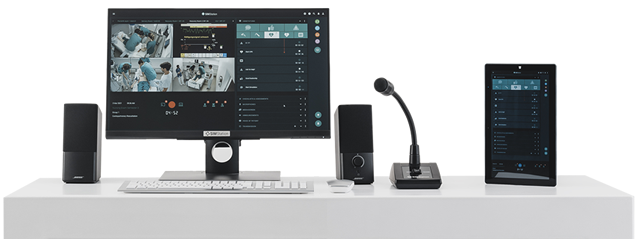
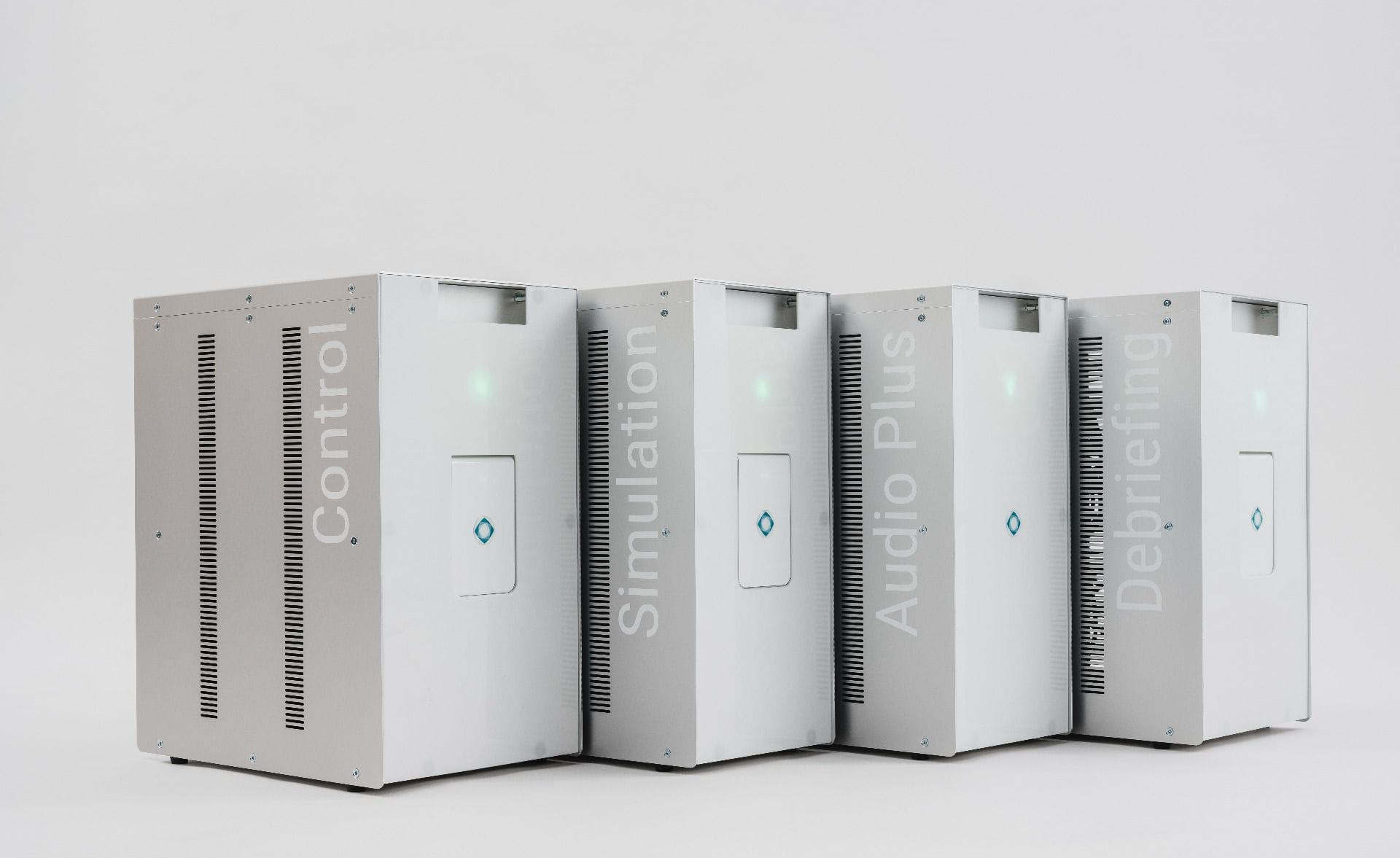
What’s in the Box?
The SIMStation Go arrived in a sleek and remarkably practical Pelican 1615 case. I simply placed it in the boot of my car and headed back to the Czech Republic. The overall weight was surprisingly light – certainly lighter than the Pro, whose five flight cases are not something you’d casually carry around. I could easily imagine myself wheeling this case through a crowded airport, en route to a training session abroad.
Inside the case were:
- Two main units (one for simulation, one for debriefing)
- Three cameras (including a compact PTZ)
- One tabletop microphone
- A video capture device for vital signs monitoring
- A substantial amount of cabling and accessories
- Camera mounts
- Two tablets (control tablet and debriefing tablet)
- Instructor's headphones
The cabling stood out – some of the best I’ve seen. Thin, flexible, easy to work with, and easy to store. In contrast, the SIMStation Pro uses bulkier, ruggedised cables designed for durability – allegedly able to withstand the weight of a car driving over them.
Connecting components was intuitive. Every device – even audio – connects via network cables to one of the main units. All it takes is selecting the appropriate length, securing or taping the cable, and clicking it in. Power, signal, and control all run through the same cable – there's virtually no room for error.
The two main units are designed with aesthetics and portability in mind – glossy white surfaces contrasted with black, complete with sturdy carry handles. A single cable connects the two units, carrying all data and power. The debriefing unit also contains the full recording server – the same one found in top-tier Enterprise systems. SIMStation clearly adheres to a one-system philosophy.
For the simulation setup – at least in the tested case – three cameras are available, including one compact PTZ, along with one ambient microphone and one speaker used either for voice-of-god communication or multimedia playback. It's also important to highlight the inclusion of a video capture device for vital signs monitoring, which makes the SIMStation Go independent of the simulator in use.
For debriefing, we connected the second unit via HDMI to an LCD display and speaker setup. Both units also feature a built-in wireless access point to support the tablets.
The package included two Microsoft Surface tablets in rugged rubberised cases. Since SIMU uses many of these, I was pleased to see SIMStation had chosen the same hardware. I appreciate them both as an administrator and as an end-user.
The larger of the two tablets (13") is used for simulation control, while the smaller one (11") serves for instructor notes during the scenario and for managing the debriefing. The wireless handoff works seamlessly – if the debriefing room is on another floor, just carry the tablet downstairs. It connects automatically to the signal from the debriefing unit. And since they’re standard Windows tablets, it’s easy to expand your setup with a larger monitor or additional peripherals.
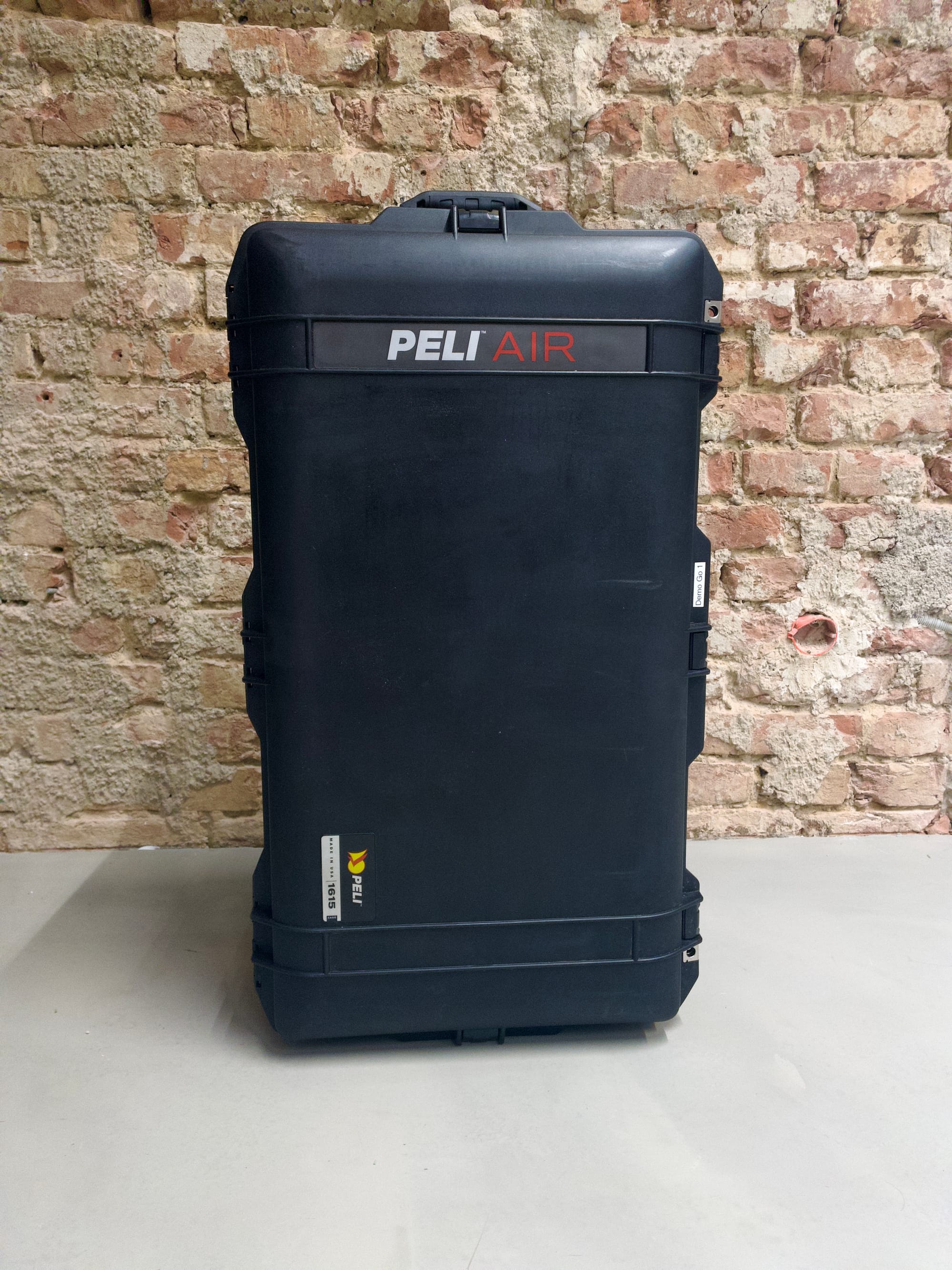
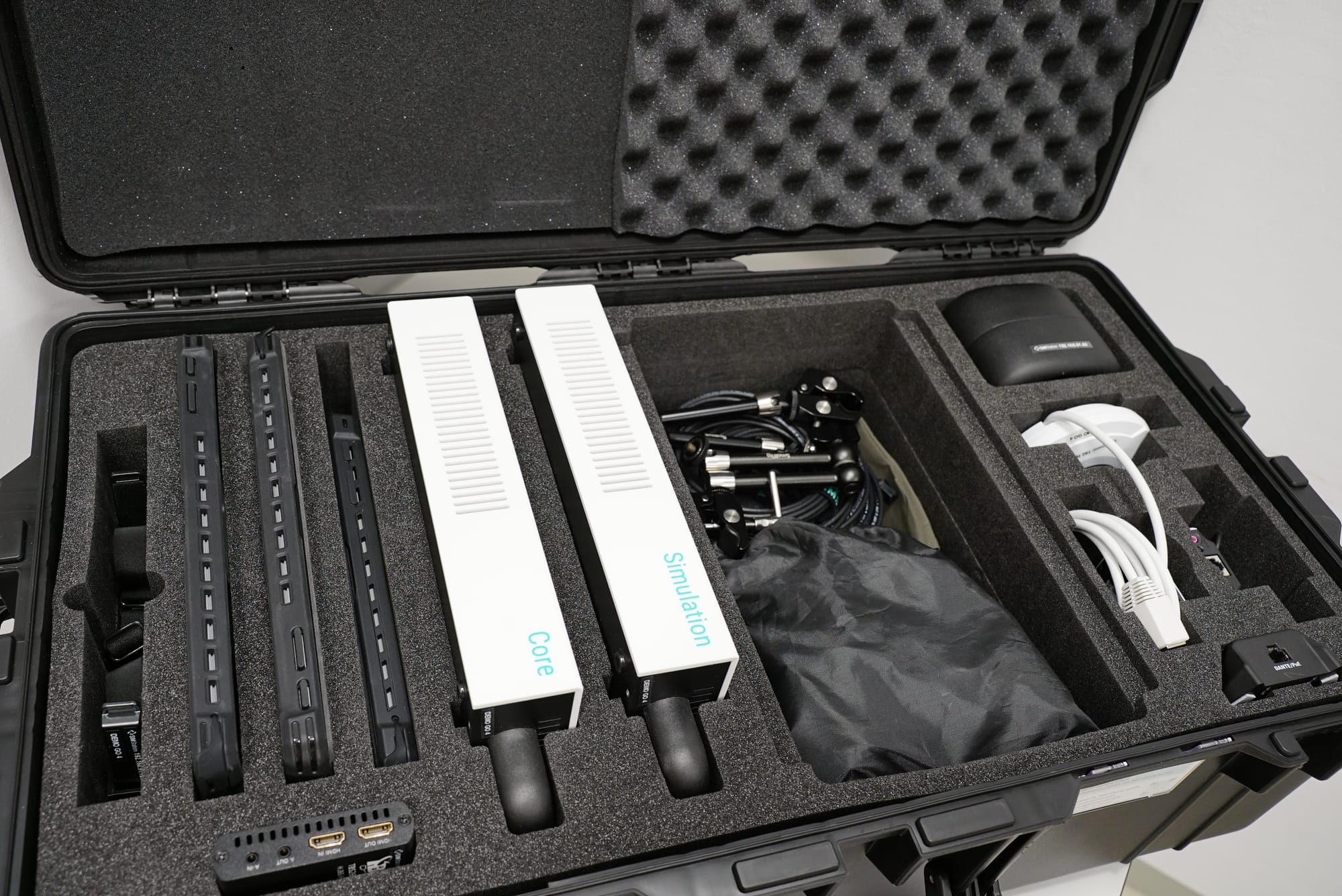
SIMStation Go in its Pelicase 1615 - ready to roll, contents of the SIMStation Go box
How Does It Perform in Practice?
This review is written from the AV/IT technician’s perspective – the person responsible for setup and support. But what about the experience for instructors who are used to the larger SIMStation systems like Pro or Enterprise?
In short – flawlessly – just like the big systems.
In a slightly rushed setup, I talked our simtech through everything over the phone only. He had never worked with the SIMStation Go before and wasn’t even present at SIMU during the installation. The course took place on a Saturday, so I promised him only phone support.
The biggest advantage in terms of usability with the Go is that it runs the exact same software as the entire SIMStation product line. The control interface is identical to what we are used to with the larger Enterprise and Pro systems. You can customise your camera layout based on your specific needs and the number of cameras in use, adjust all microphones directly from the software, and make full use of familiar features like checklists, bookmarks, and more.
What’s particularly convenient with all the mobile systems – both Go and Pro – is a simple yet powerful feature that lets you view the live feed from each camera on any of the supplied tablets. This means you can just pick up a tablet, walk around, and adjust each camera’s angle and zoom in real time by simply looking at the tablet screen.
Thanks to that, our simtech just sat down at the Go – and delivered the course as if he was using our full Enterprise system.
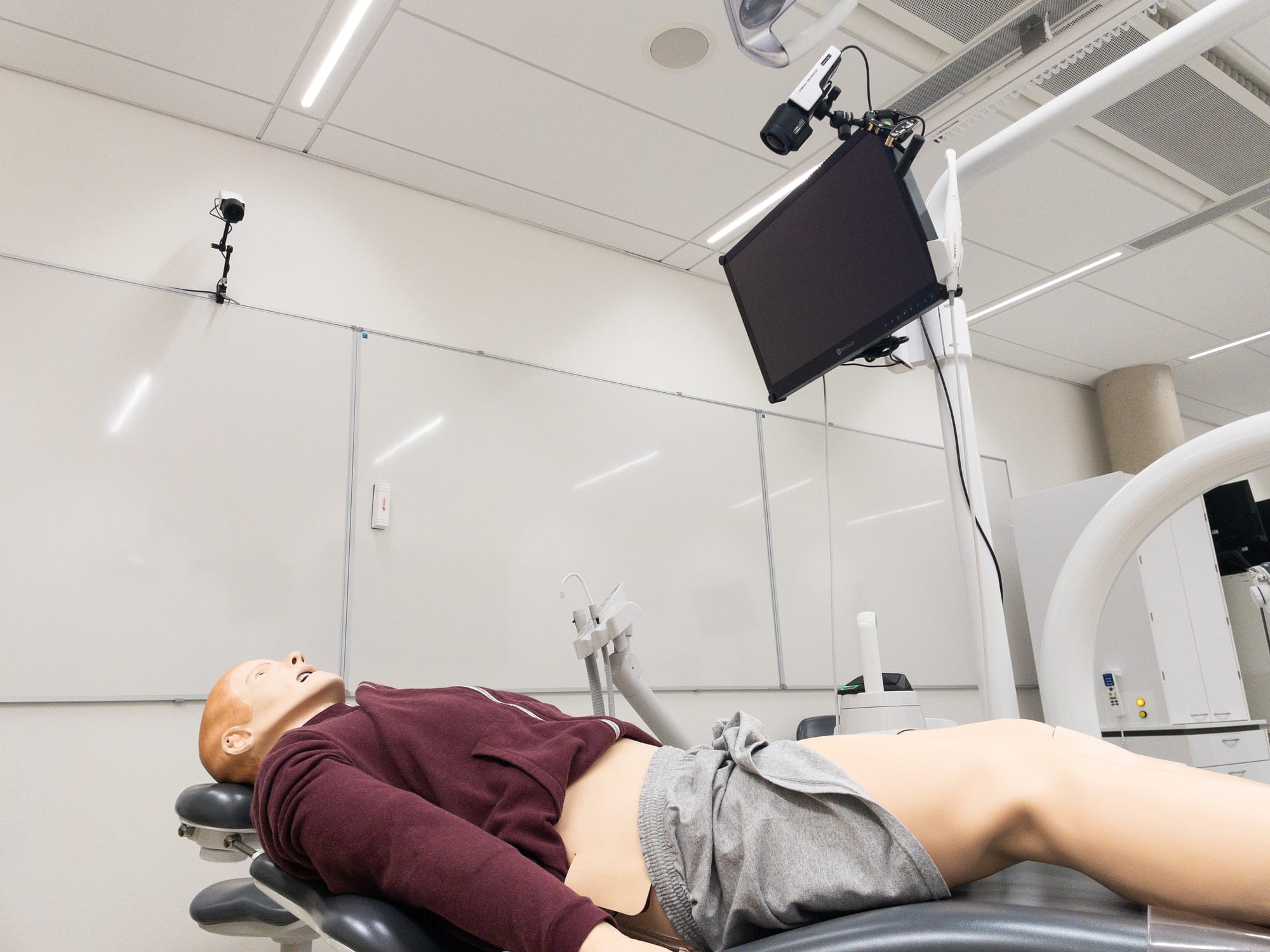
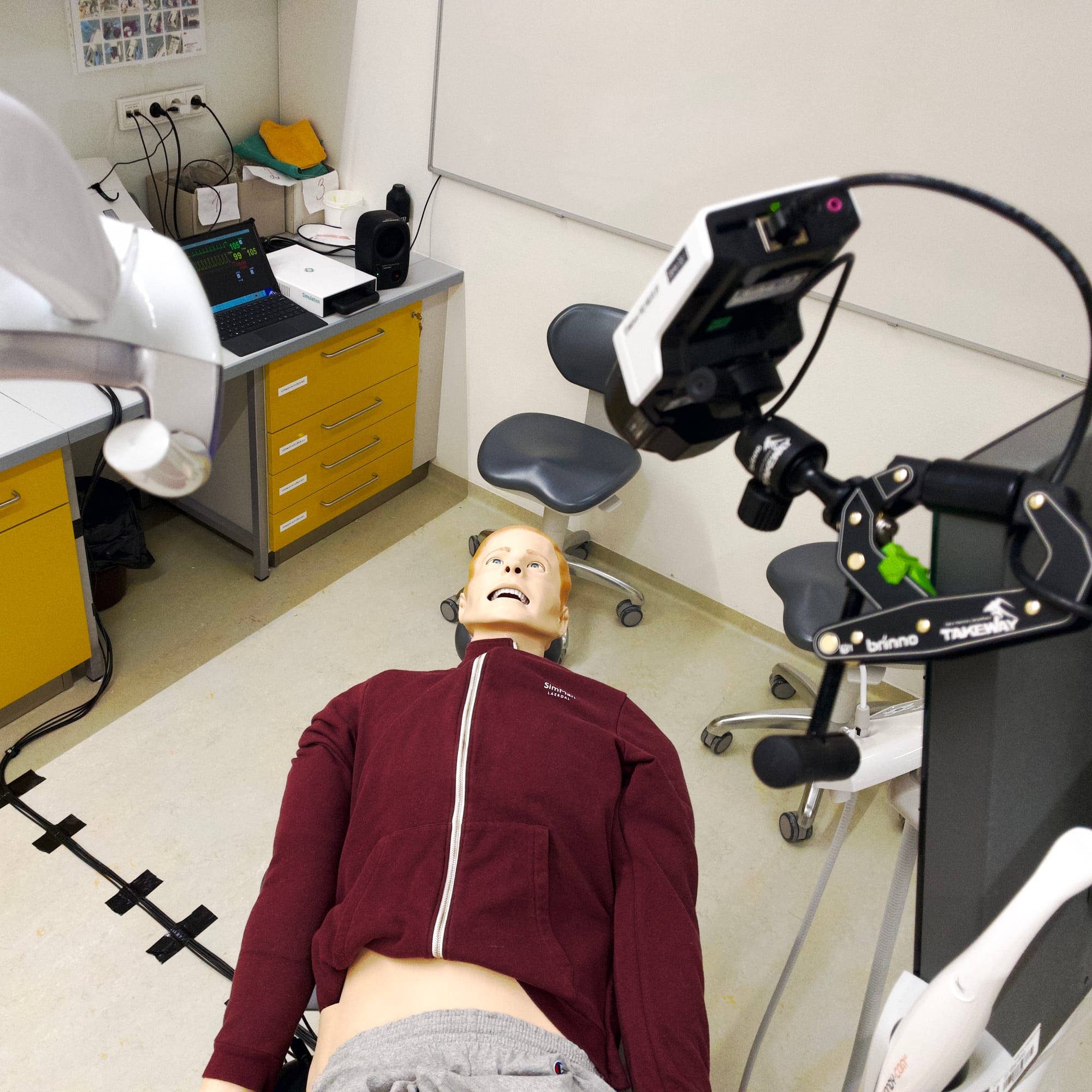
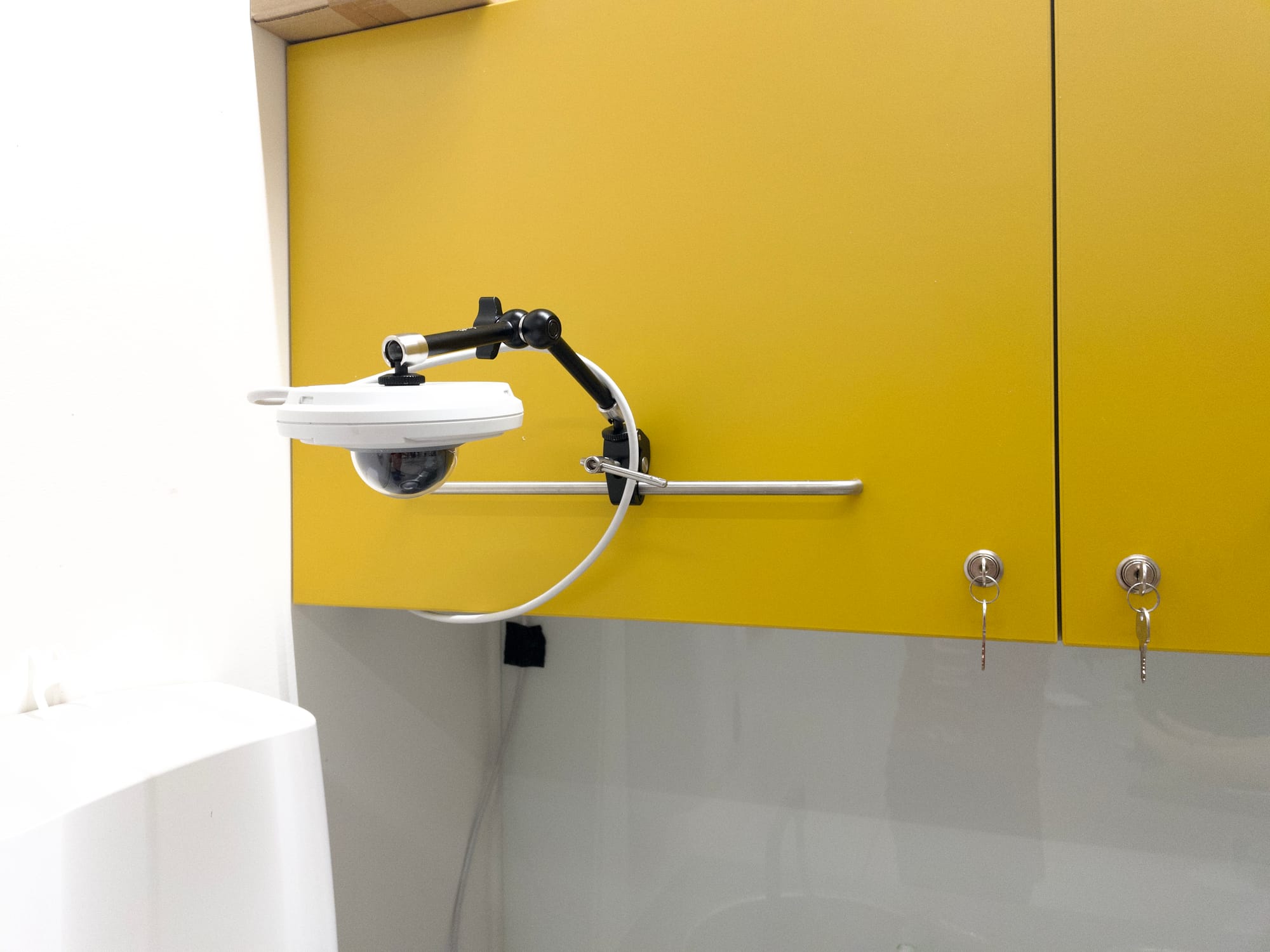
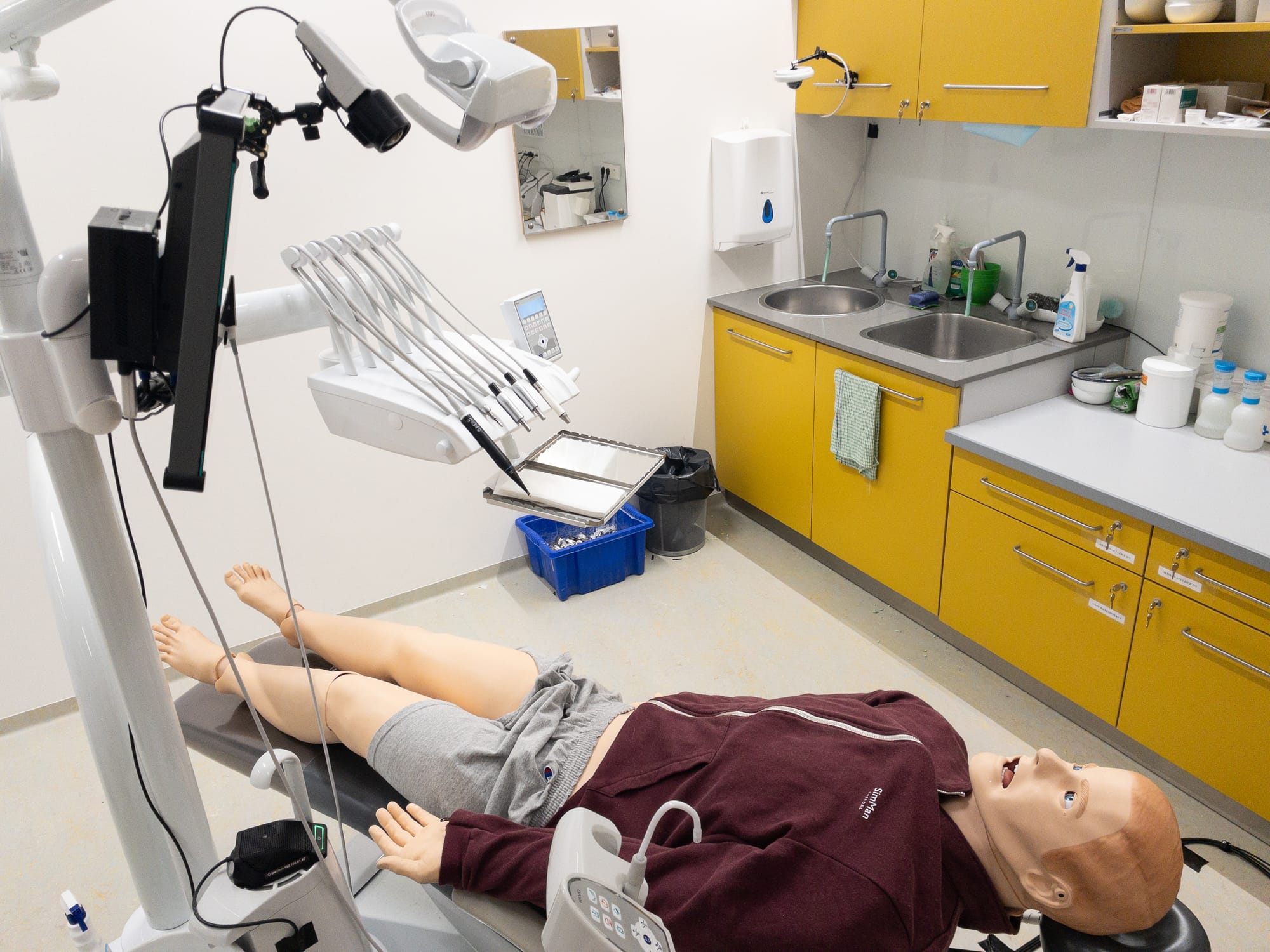
Simulation setup - cameras and simulation unit with VOG speaker. Microphone can be seen next to the simulators hand.
What I Love About It
- True mobility: Everything you need fits in a single case.
- Professional hardware: No plastic webcams with built-in mics – this is serious equipment.
- Instant familiarity: From software (and hardware) perspective, if you know SIMStation Pro or Enterprise, you already know how to run the Go.
- Scalability: You can bring additional cameras or expand to external monitors as needed.
What Could Be Improved
- Audio split for control: We would have liked separate headphones or speakers for technician and instructor. In one-person setups, the current configuration is fine – but we always ran simulation in two people.
- No control room speakers: Similar to previous. Unlike the Pro, the Go lacks dedicated speakers for the control room – you’ll be using headphones the whole time.
- Cable labelling: Little labels marking different lengths would save time. Aesthetic preference? White cables. Practical preference? Colour-coded ones.
What I Didn’t Miss
- More wireless features: Some may wish for wireless cameras or microphones, but the trade-off in latency and jitter wouldn’t be worth it. Besides, you’d still need to power them.
Conclusion
The SIMStation Go is an excellent mobile system. I can see myself travelling across the country – or the globe – with it. Setup is quick, operation is intuitive, and the hardware is robust.
You’re not just handling consumer gear – this is professional-grade AV equipment.
With three cameras, vital sign video capture, a tabletop mic, and a quality speaker for voice-of-god, the Go delivers high-end debriefing performance in any in-situ context.
But don’t be misled – while it shares the same software and hardware lineage as the Pro and Enterprise, there are key differences. The Pro still outperforms the Go in several areas, especially in terms of audio. It includes dedicated audio processing hardware and can be extended with wireless mic units – a big plus in dynamic simulations. Unsurprisingly, these features come at a higher cost.
Extra 1: Connecting Control Room Speakers
One limitation of the SIMStation Go (in the tested configuration) is the absence of speakers in the control room. Headsets with microphones are provided – a sensible solution considering the use of a small tablet instead of a full PC, and ideal for mobile setups.
However, our simulations are typically managed by two people – a hi-fi technician and an instructor. Sharing one headset simply doesn’t work.
The fix? Elegant and easy. I grabbed an Apogee Duet 3, an external USB audio interface we have available at SIMU, and connected it to the tablet, and requested SIMStation support to install the necessary drivers on a Friday afternoon.
It worked perfectly. With this, we expanded the Go’s capabilities to support Pro-style audio output – and multiple headphone connections if needed.
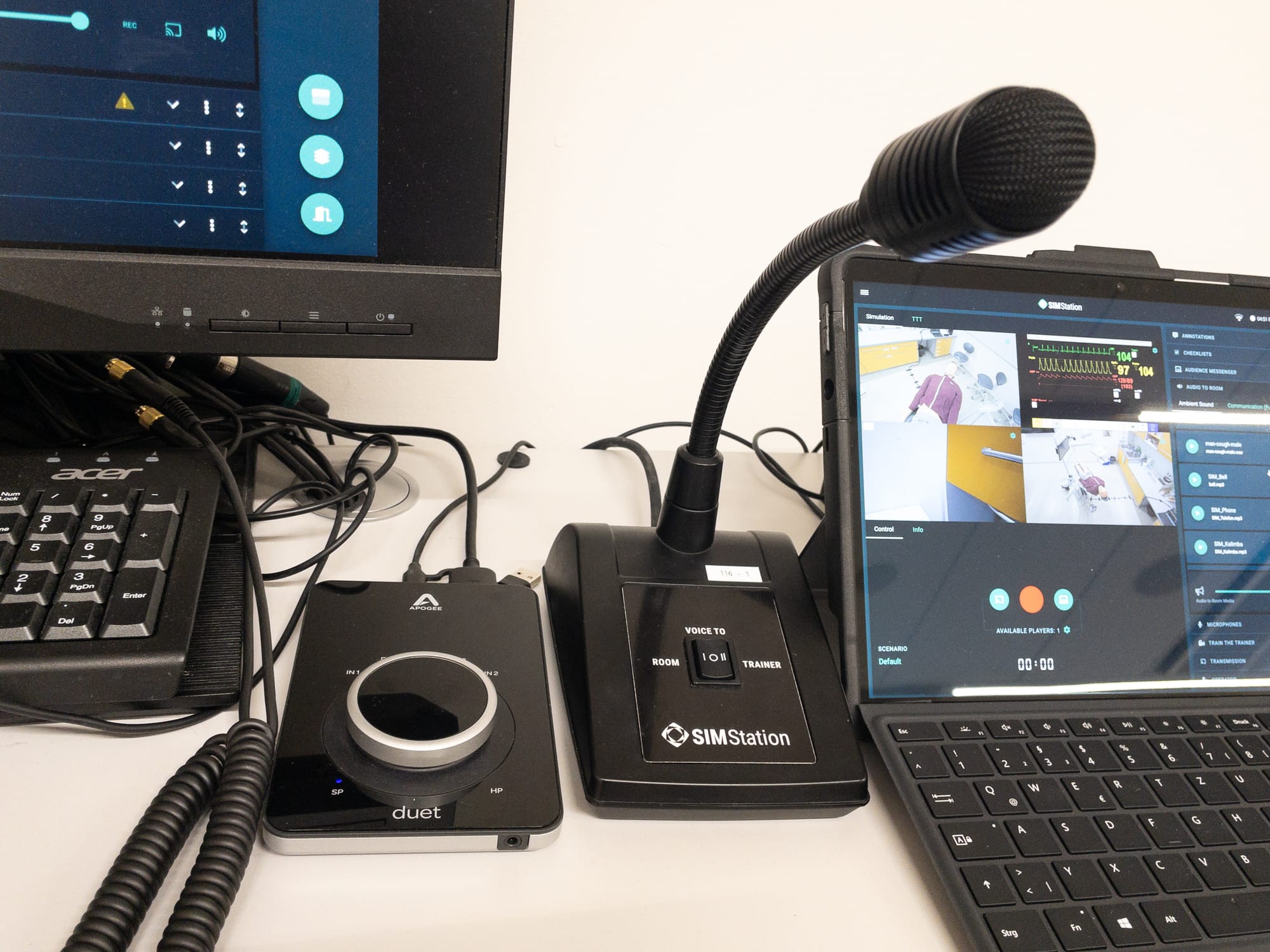
Extra 2: The World’s Most Expensive Baby Monitor
While I had this beauty at home during transport, I couldn’t resist experimenting – could the SIMStation Go work as a baby monitor for my two kids?
Technically? Yes. It has a camera, a mic, and a speaker.
But practically… not so much. The audio quality was too good. 😄 My wife kept turning around while christmas baking, convinced the kids were talking right behind her back in the kitchen. The sound was just too clear.
Still, the kids loved the cameras scattered across the bedroom. Even the cat came in to inspect.


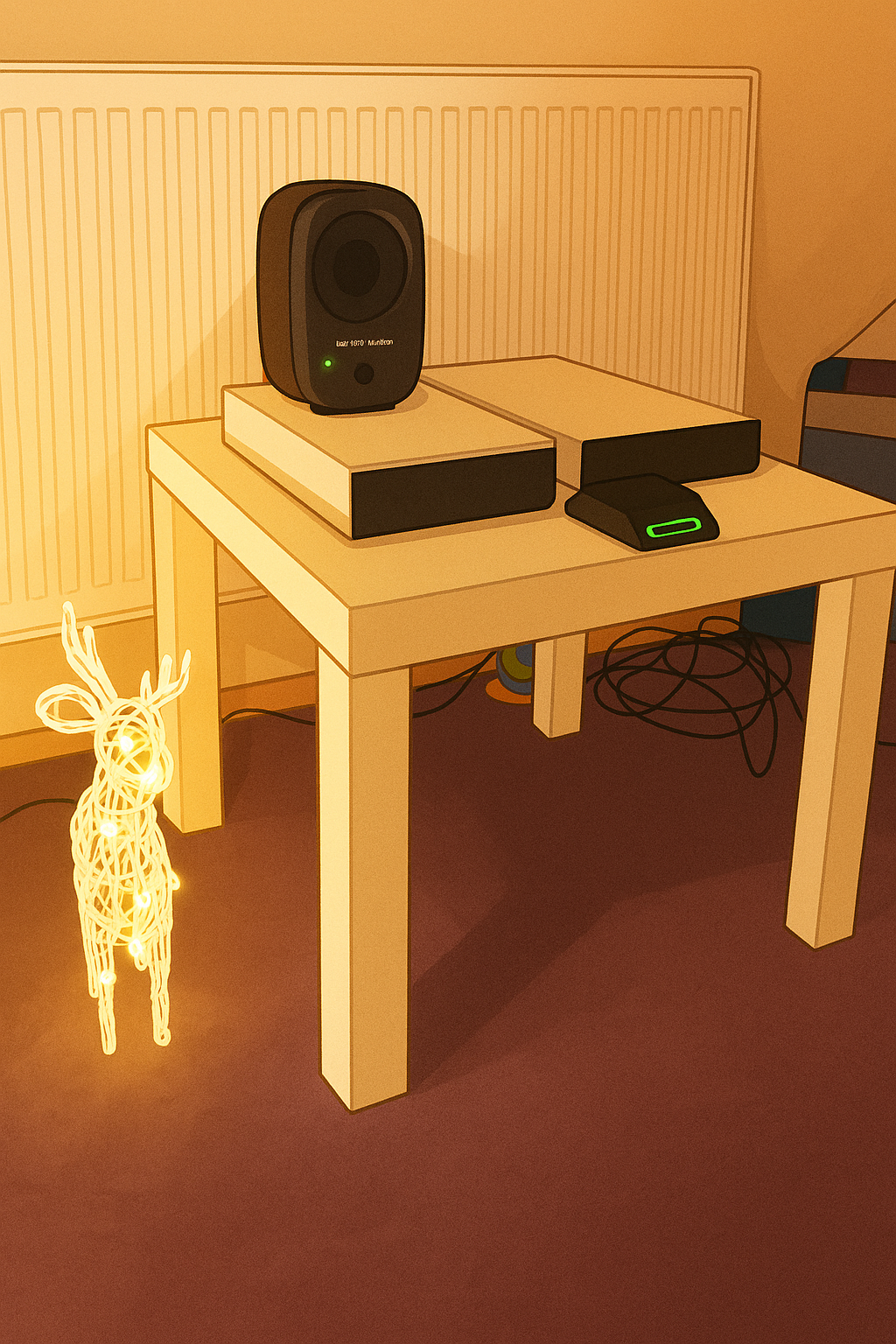
The World’s Most Expensive Baby Monitor tested during Chrismas Baking (To protect my child’s privacy, I used AI to recreate the photos as illustrations)
